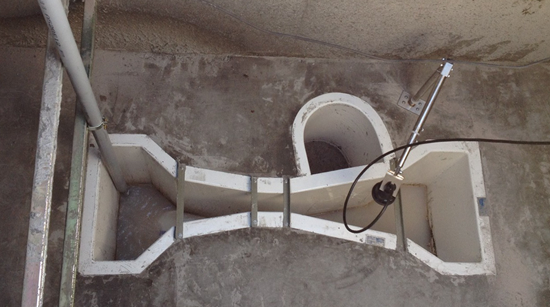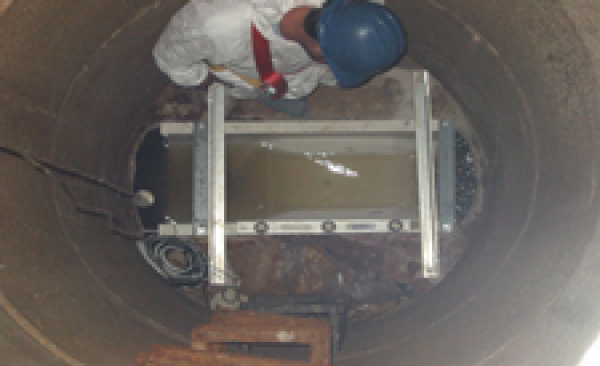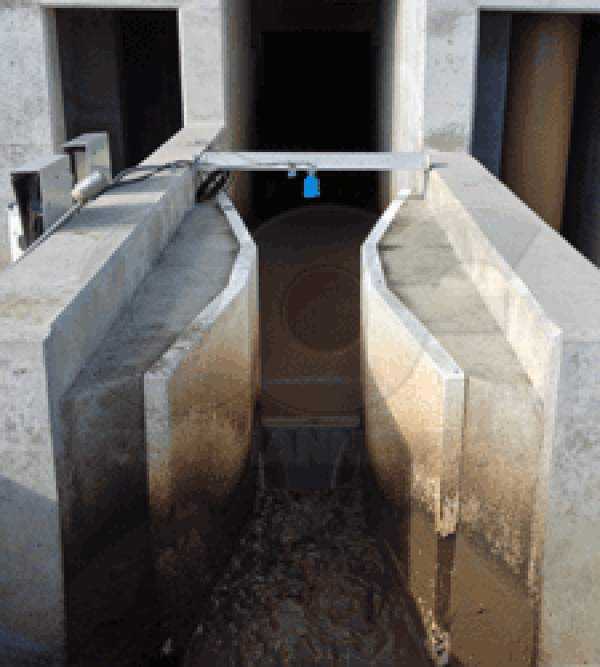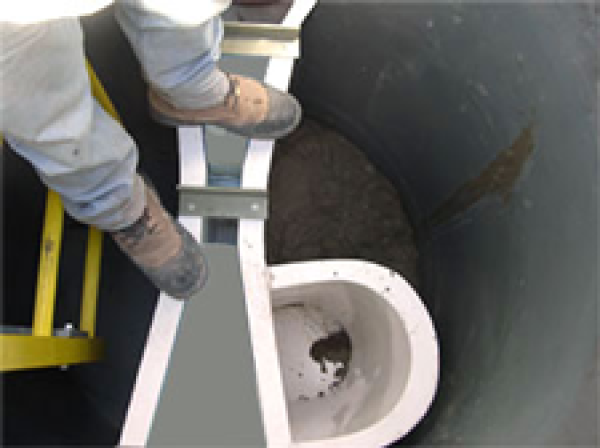This website uses a variety of cookies, which you consent to if you continue to use this site. You can read our Privacy Policy for
details about how these cookies are used, and to grant or withdraw your consent for certain types of cookies.
Wastewater Flumes
Flumes of all styles are used in the measurement and treatment of wastewater. Wastewater applications can be municipal or industrial in nature and their content can be sanitary (including mixed) or non-sanitary.
Note that in applying a flume to the measurement of wastewater flows with sanitary solid, the throat width of the flume should be no less than 3-inches [7.62 cm]. Smaller than that and clogging of the flume will occur.

Municipal Treatment Plants
At treatment plants Parshall flumes are commonly found at the headworks and effluent of the plant. Parshall flumes are also used to measure the flow of partially treated waters between various treatment processes within the plant.
Cutthroat flumes, while they work well for both headworks and effluent applications, are more commonly used for flow splitting or measuring interplant flows.
With relatively few sizes to choose from, Trapezoidal flumes are typically only found at small or rural package plants. Their ability to measure low flow accurately coupled with their ability to pass solids well, make them a natural fit for these applications.
However, because of their shape, they can require a fairly large installation footprint. Also, a Trapezoidal flume’s resolution (or sensitivity to a change in flow) is relatively low when compared to other flume types, thus they are generally not suited to more typical wastewater treatment plant applications.
Montana and H flumes are occasionally used at municipal treatment plants, but not frequently so. Of the two, there are more potential applications for the Montana flume (where flow spills off the end of a Parshall flume), but actual use is low due to a lack of awareness regarding the flume.
For other than small packaged plants, HS flumes the maximum flow rates are too small. This coupled with the likelihood of clogging on unscreened flows, makes the use of the HS flume in municipal treatment plant applications almost nonexistent. HL flumes, on the other hand, require both a large installation footprint and near-free-spilling conditions are highly unlikely to be used.
Industrial Pretreatment
Like their larger municipal brethren, industrial pretreatment plants commonly use Parshall flumes to measure their wastewater flows – whether these flows are treated effluent or a combination of industrial and sanitary wastewater.
At treatment plants Parshall flumes are commonly found at the headworks and effluent of the plant. Parshall flumes are also used to measure the flow of partially treated waters between various treatment processes within the plant.
Unless an installation is large, there is usually not a need for flow splitting in industrial pretreatment plants. Flow splitting is where Cutthroat flumes are most commonly applied when measuring wastewater, so from an industrial standpoint it is really more a lack of opportunities than anything limiting the adoption of the Cutthroat flume there.
Trapezoidal flumes work well in small to midsized industrial pretreatment applications. In particular their abilities to pass solids and measure low flows accurately are valuable there.
Montana flumes occasionally play a part in industrial pretreatment systems, replacing Parshall flumes in some applications, but as in municipal wastewater treatment a lack of flume type awareness limits adoption.
HS and H flumes are more common in industrial pre-treatment applications than they are in municipal ones. Frequently the flows are low and many are free of sanitary or large solids. HL flumes, while useful in storm water runoff monitoring, do not apply well to industrial pretreatment situations. Their size is too large and the free-spilling discharge requirement is limiting.
RBC Flumes
RBC flumes lack a sufficient range of sizes to truly handle municipal or industrial pretreatment flows. The flumes were developed for ditches and furrows and, so far as we are aware of, have never been used to measure treatment plant flows. There are simply too many other flumes and sizes of flumes that handle treatment plants flows better and which have higher visibility in the industry.
Image: Mehall Contracting
Related Blog Posts
Explore more insights in our blog.

LOCATIONS IN ATLANTA, GA & BOISE, ID





